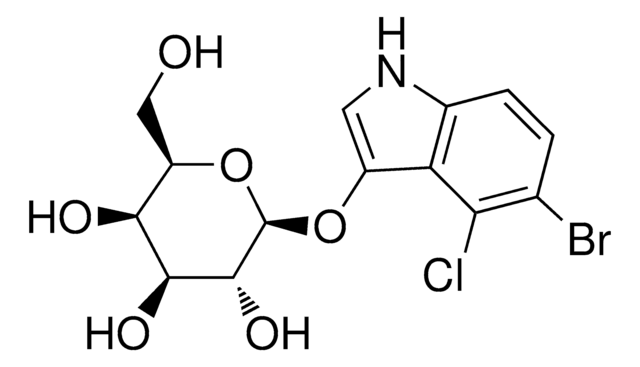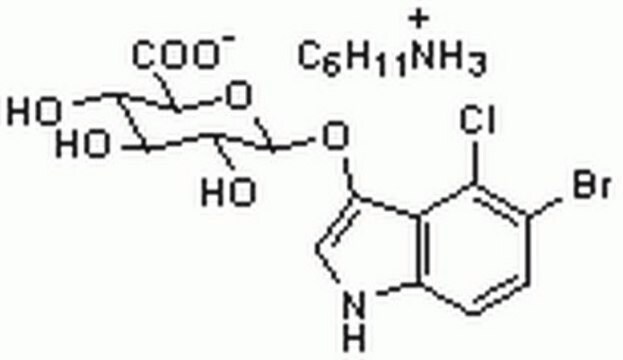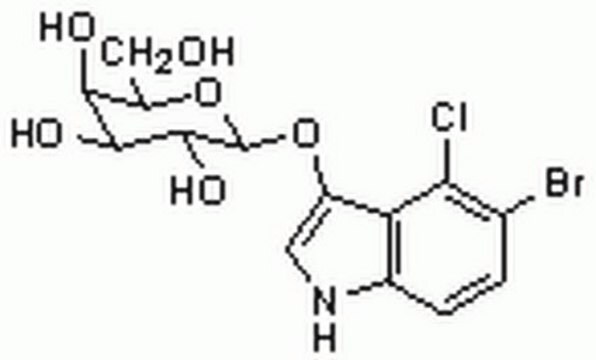B9146
5-bromo-4-chloro-3-indolyl β-D-galactopyranoside
≥98%, powder, suitable for identification of lac+ bacterial colonies
Synonyme(s) :
5-bromo-4-chloro-3-indolyl β-D-galactoside, BCIG, X-Gal
About This Item
Produits recommandés
Nom du produit
5-bromo-4-chloro-3-indolyl β-D-galactopyranoside, ≥98%
Essai
≥98%
Forme
powder
Solubilité
DMF: methanol (1:1): soluble 50 mg/mL
Adéquation
suitable for identification of lac+ bacterial colonies
Température de stockage
−20°C
Chaîne SMILES
OC[C@H]1O[C@@H](Oc2c[nH]c3ccc(Br)c(Cl)c23)[C@H](O)[C@@H](O)[C@H]1O
InChI
1S/C14H15BrClNO6/c15-5-1-2-6-9(10(5)16)7(3-17-6)22-14-13(21)12(20)11(19)8(4-18)23-14/h1-3,8,11-14,17-21H,4H2/t8-,11+,12+,13-,14-/m1/s1
Clé InChI
OPIFSICVWOWJMJ-AEOCFKNESA-N
Vous recherchez des produits similaires ? Visite Guide de comparaison des produits
Catégories apparentées
Application
Reconstitution
Produit(s) apparenté(s)
Code de la classe de stockage
11 - Combustible Solids
Classe de danger pour l'eau (WGK)
WGK 3
Point d'éclair (°F)
Not applicable
Point d'éclair (°C)
Not applicable
Équipement de protection individuelle
Eyeshields, Gloves, type N95 (US)
Faites votre choix parmi les versions les plus récentes :
Déjà en possession de ce produit ?
Retrouvez la documentation relative aux produits que vous avez récemment achetés dans la Bibliothèque de documents.
Les clients ont également consulté
Articles
General protocols for growth of competent cells and their transformation (uptake of DNA).
Transformation is the process by which exogenous DNA is introduced into a cell, resulting in a heritable change or genetic modification. This was first reported in Streptococcus pneumoniae by Griffith in 1928. Transforming principle of DNA was demonstrated by Avery et al. in 1944.
Protocoles
Technical Article on competent cells. Transformation is a process by which some bacteria take up foreign genetic material (naked DNA) from the environment.
Yeasts are considered model systems for eukaryotic studies as they exhibit fast growth and have dispersed cells.
General protocols for growth of competent cells in microbial medium.
Notre équipe de scientifiques dispose d'une expérience dans tous les secteurs de la recherche, notamment en sciences de la vie, science des matériaux, synthèse chimique, chromatographie, analyse et dans de nombreux autres domaines..
Contacter notre Service technique







